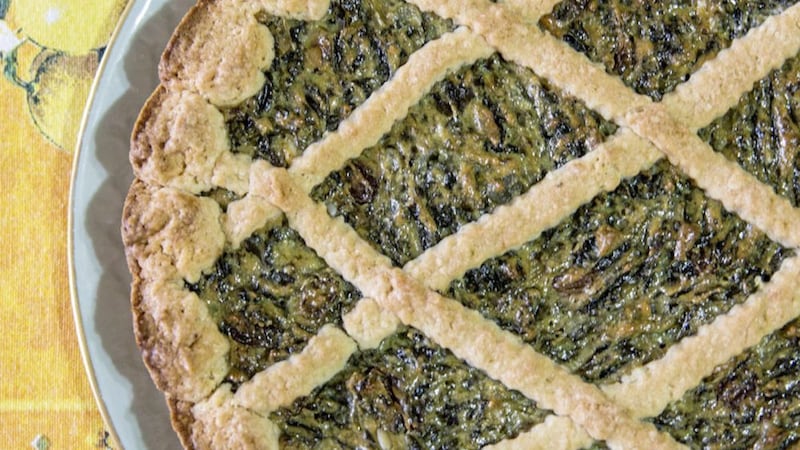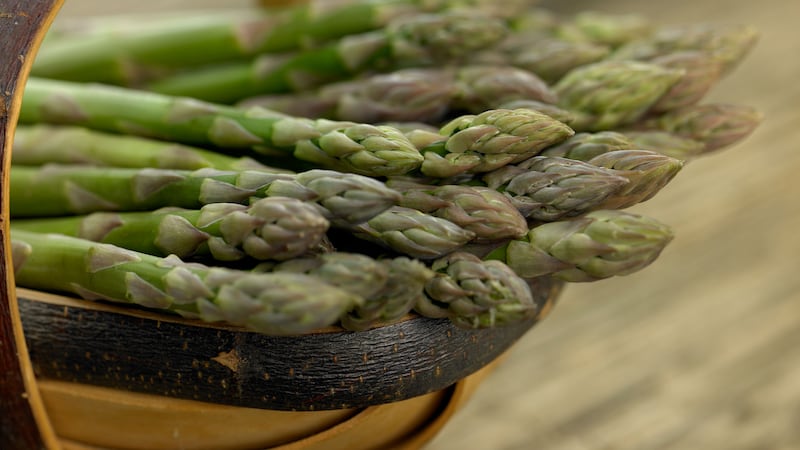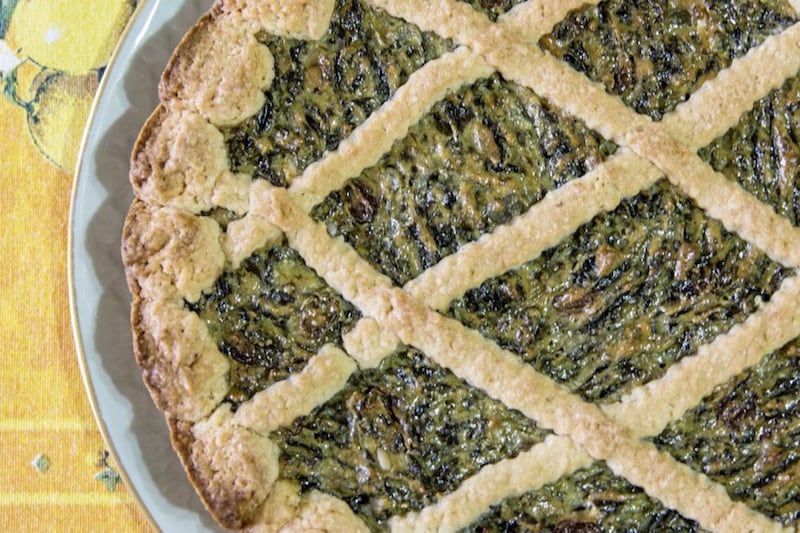WHEN I arrive for my Tuscan masterclass, Giancarlo Caldesi is whisking custard in a stainless-steel pan. He motions me over to sniff it, fragrant with saffron, before explaining – in great detail – the art of using cling film to seal in the warmth of the custard and avoid it growing a thick, school dinner-style skin. The man is all about detail, and all about cooking with emotion.
The Tuscan-born chef and his wife Katie, a cookery writer and former artist – who is stirring a bowl of ricotta and icing sugar, puffs of it dancing off the spoon – met in 1997. Two decades on, they have two sons, two restaurants, La Cucina Caldesi and Caffe Caldesi, and their own Italian cookery school.
But today, they are buzzing around their slick teaching kitchen, showing me how to make a whole menu's worth of dishes from their latest cookbook, Tuscany. It is their fifth book in a series that each take one Italian region as their focus; they've already covered the Amalfi Coast, Venice, Rome and Sicily.
Giancarlo was born and raised in Montepulciano Stazione, near the Umbrian border, Katie explains.
"They only ate organic, seasonal, fresh, homegrown food," she says, describing her husband's childhood. "Giancarlo's mother would cook in a cauldron over a fire – we still have it, we serve pasta in it at parties – and then the outdoor oven for baking would only be fuelled every 10-14 days, and the whole village would come and help." It sounds idyllic, but it was a way of living dictated by poverty, combined with the tradition of eating what you've grown yourself.
Later, the marshmallowy-soft almond biscuits we've just made eaten and duly dunked in a creamy mixture of coffee, ricotta and brandy, Katie gets me started on a sweet Swiss chard tart.
"It's a traditional recipe from Lucca," she says, explaining how postwar poverty led to people bulking out dishes, savoury and sweet, with vegetables that were more readily available.
Using our hands, we squash mounds of cooked chard, ricotta, pine nuts, cinnamon, walnuts and raisins into a pastry case, while Giancarlo makes his favourite Caffe Caldesi tomato pasta sauce nearby.
The couple are hilariously distracting, telling snippets of stories, talking over one another, bickering, wheedling and mocking each other constantly. Giancarlo takes his food seriously though. Hence he keeps interrupting our tart-making to charge me with tasting his slow cooked tomato sauce at every stage of its development. He tells me: "In Italy there is a feeling to the food – you can tell if an Italian chef made it or not."
Taking the right amount of time over food – whether it's a joint of meat or a simple pasta sauce – is important too he explains, and rushing is not the done thing in Italy. "We spent a whole day making a wood pigeon Ravioli," Giancarlo says. "You cannot be English in Italy, you must go with the flow."
:: Tuscany: Simple Meals And Fabulous Feasts From Italy by Katie and Giancarlo Caldesi is published by Hardie Grant Books, priced £36. Below are two recipes from the book for you to try.
SWEET SWISS CHARD TART
(Serves 10-12)
For the pastry:
200g '00' flour
200g chilled butter, cubed
1 egg
100g caster (superfine) sugar
1 level tsp baking powder
Finely grated zest of 1/2 lemon
For the filling:
50g walnuts, roughly chopped
50g pine nuts
600g Swiss chard leaves and thin, tender stalks, or 300g spinach leaves and tender stalks, roughly chopped
Pinch of salt
10g salted or unsalted butter, cubed
500g ricotta, drained
100g raisins
75g caster sugar
1tsp ground cinnamon (optional)
Finely grated zest of 1/2 lemon
Ice cream, cream or custard, to serve
To make the pastry, put the flour and butter in a bowl and rub the butter into the flour with your fingertips until the mixture resembles fine breadcrumbs. Add the egg and the remaining ingredients and mix again to blend (make the pastry in a food processor if you prefer). Form the pastry into a ball, wrap it in cling film (plastic wrap) and leave it to rest in the fridge for one hour.
Preheat the oven to 180C and line a 24 x 3cm tart tin with baking parchment so that it protrudes above the edge of the dish by 2cm.
To make the filling, put the walnuts and pine nuts in a roasting tray and toast them in the oven for five minutes. Remove and set aside to cool. Put the Swiss chard or spinach leaves in a pan with a little water, the salt and butter, cover and cook until soft and tender (Swiss chard will take longer than spinach). Once soft, drain and leave until cool enough to handle. Squeeze the leaves really well between your hands to rid them of excess water. Put the leaves on a board and chop them finely with a sharp knife. When cool, mix them in a bowl with the remaining ingredients. Taste and adjust the flavour with more cinnamon (if using) or lemon zest as necessary.
Remove the pastry from the fridge, unwrap it, roll it out to a thickness of around 5mm and use it to line the tart tin. Prick the base of the pastry with a fork and spoon in the filling mixture, smoothing the surface with a fork or palette knife. Trim away the excess pastry. Roll out the leftovers and cut strips about 1cm wide with a pastry wheel cutter or a knife. Create a lattice pattern on the top of the tart with the strips. Bake for around 45 minutes or until lightly browned.
Remove the tart from the oven and leave it to cool in the tin, then serve with ice cream, cream or saffron custard.
COFFEE AND RICOTTA SHOTS
(Serves 4-6)
250g ricotta, drained
4tbsp cold espresso
3tsp caster sugar (superfine), plus more to taste
2tsp Cognac
20g dark chocolate (minimum 70 per cent cocoa solids)
Whisk the ricotta in a bowl with the coffee, sugar and the Cognac. Taste and adjust the sweetness as necessary, adding more sugar if you wish. Spoon into small glasses, taking care not to splash it onto the sides of the glass. Use a sharp knife to shave curls of chocolate and scatter them over the top. Keep them in the fridge for up to one day until you are ready to eat them. Serve chilled.




